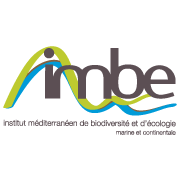Description
PICS STRAS
Gene content of sponges was characterized by transcriptomic or genomic approaches. Surprisingly, despite their simplicity sponges contain most of the developmental gene families present in bilaterians. The next step to be reached is now to understand how similar genetic toolboxes can result in widely dissimilar bodyplan organization, dynamics and life histories. To answer this question, three main axes of research have to be undertaken : 1) sequencing more whole genomes ; 2) conducting much more gene expression studies (available data remain sparse) ; 3) developing reproducible knock down protocols ; 4) reinterpreting sponge cell structure and mechanisms with nowadays tools.
The 4 partners are interested and involved in these four aspects, but the present project focuses on point 4.The present knowledge of sponge cell biology mainly relies on classical (static) observations, which fail to provide a dynamical description of cellular behaviors and mechanisms, essential to decipher morphogenetic processes.
Much remains to be tested in terms of cell specific staining and tracking to understand which key cellular processes are involved in sponge morphogenesis and to evaluate the so-called “lability” of sponge cells. We propose to join our efforts and skills to make substantial advances in these techniques to evaluate the implications of three primordial cellular mechanisms : cell death, cell proliferation/differentiation and mesenchymal-epithelial/epithelial-mesenchymal transitions (MET/EMT). We will perform these comparisons in 3 species with different features : 1 filtering Demosponge Amphimedon queenslandica, 1 carnivorous sponge (devoid of aquiferous system) Lycopodina hypogea, 1 Homoscleromorph sponge Oscarella lobularis.
We aim at :
Aim 1 : Evaluating the relative stemness of sponge cell types
Aim 2 : Evaluating the relative involvement of EMT/MET during regeneration
Aim 3 : Evaluating the involvement of apoptotic events during regeneration
Aim 1
Aim 1 : Evaluating the relative stemness of sponge cell types
Aim 2
Aim 2 : Evaluating the relative involvement of EMT/MET during regeneration
Aim 3
Aim 3 : Evaluating the involvement of apoptotic events during regeneration
Events
– Kick off meeting :3rd may 2018. IMBE, IBDM and ISEM members met in Marseille. B. Degnan joined us thanks to video.

– Second meeting : 2nd-3rd July 2018. IMBE, IBDM, ISEM and UQ members met in Marseille.


from left to right : Sandra Degnan, Bernard Degnan, Sandrine Chenesseau, Emmanuelle Renard, Alexander Ereskovsky, Stephen Baghdiguian, Nelly Godefroy, Emilie Liaboeuf-Le Goff, Jean Vacelet, André Le Bivic, Amélie Vernale, Caroline Rocher.
– First joint Poster : presented at the international Evolutionary Biology Meeting (EBM), 25th-28th september 2018, Marseille.
communication
Joint Poster presented at the international Evolutionary Biology Meeting (EBM), 25th-28th september 2018, Marseille.
Partners
Marine Genomic Laboratory - Institut Méditerranéen de la Biodiversité et d’Ecologie marine et continentale - Institut des Sciences de l’Évolution de Montpellier - Institut de Biologie du Développement de Marseille
Financial partner
PICS STRAS is supported by CNRS














